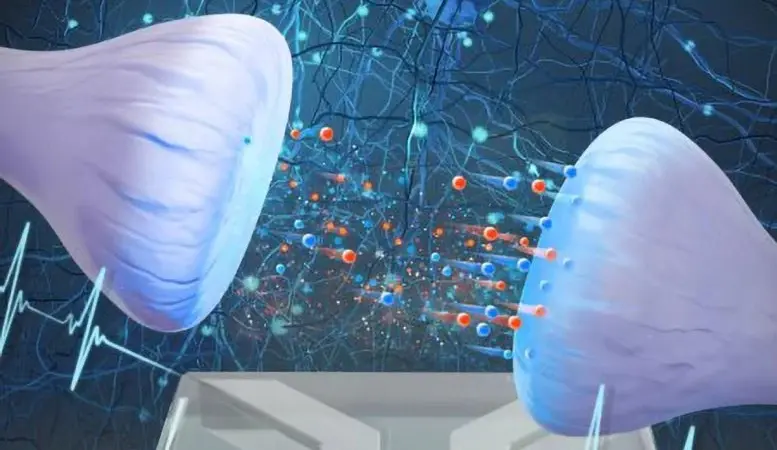Together, theoretical physicists from Utrecht University and experimental physicists from Sogan University in South Korea managed to build an artificial synapse. This synapse works with water and salt and is the first evidence that a system using the same environment as our brain can process complex information. The results were published in a scientific journal Proceedings of the National Academy of Sciences.
Scientists trying to improve the energy efficiency of ordinary computers have long turned to the human brain for inspiration. They try to imitate his extraordinary talent in various ways. These efforts have led to the development of brain computers that depart from traditional binary processing and adopt analog methods similar to our brains. But while our brains work using water and dissolved salt particles called ions as media, most modern brain-inspired computers rely on traditional solid materials.
This raises the question: Can we achieve a more accurate reproduction of the brain using the same medium? This intriguing possibility underlies the emerging field of iontronic neuromorphic computing.
artificial synapse
In a recently published study PNAS Scientists have demonstrated for the first time a system based on water and salt that demonstrates the ability to process complex information, mirroring the functionality of our brain. At the center of this discovery is a small 150 x 200 micrometer device that mimics the behavior of the synapse, a key component responsible for transmitting signals between neurons in the brain.
from the Institute of Theoretical Physics and Mathematics at Utrecht University. and Tim Kamsma, lead author of the study, expresses his excitement: “Although artificial synapses that can process complex information already exist based on solid materials, now, for the first time, this feat can be done with water and salt.” “We effectively reproduce the behavior of neurons with a system that uses the same environment as the brain,” he emphasizes.
“Perhaps this will pave the way for computer systems that more accurately replicate the extraordinary capabilities of the human brain.” — Tim Tim Kamsma, PhD and lead author
migration of ions
The device, developed by scientists in Korea and called iontronic memristor, contains a cone-shaped microchannel filled with water and salt solution. After electrical pulses are received, ions in the liquid move through the channel, resulting in changes in ion concentration. Depending on the intensity (or duration) of the pulse, the conductance of the channel adjusts to reflect the strengthening or weakening of connections between neurons. The degree of change in conductivity serves as a measurable representation of the input signal.
An additional finding is that channel length affects the time required for concentration changes to dissipate. “This suggests that, again like synaptic mechanisms seen in our brains, channels can be adapted to store and process information at different times,” Kamsma said. he explains.
Ah!
The origins of this discovery can be traced back to an idea conceived by Kamsma, who recently began his doctoral research. He developed this concept into a robust theoretical model, focusing on the use of artificial ion channels for classification tasks.
“At that time, by chance, we crossed paths with a research group in South Korea,” Kamsma recalls. “They accepted my theory with great enthusiasm and quickly began experimental work based on it.” Remarkably, the initial findings were realized only three months later and closely matched the predictions outlined in Kamsma’s theoretical framework. “I thought, wow!” he thinks. “It is extremely rewarding to see the transition from theoretical assumptions to concrete real-world results, ultimately leading to these beautiful experimental results.”
An important step forward
Kamsma emphasizes the fundamental nature of the research and emphasizes that although ionic neuromorphic computing is developing rapidly, it is still in its infancy. The intended result is a computer system that will greatly exceed the efficiency and power consumption of today’s technologies. However, whether this vision will come true remains speculative for now. With all this said, Kamsma sees the publication as an important step forward.
“This represents a significant advance towards computers that can not only mimic the communication patterns of the human brain but use the same medium,” he says. “Perhaps this will eventually pave the way for computer systems that more accurately replicate the extraordinary capabilities of the human brain.”
Source: Port Altele
